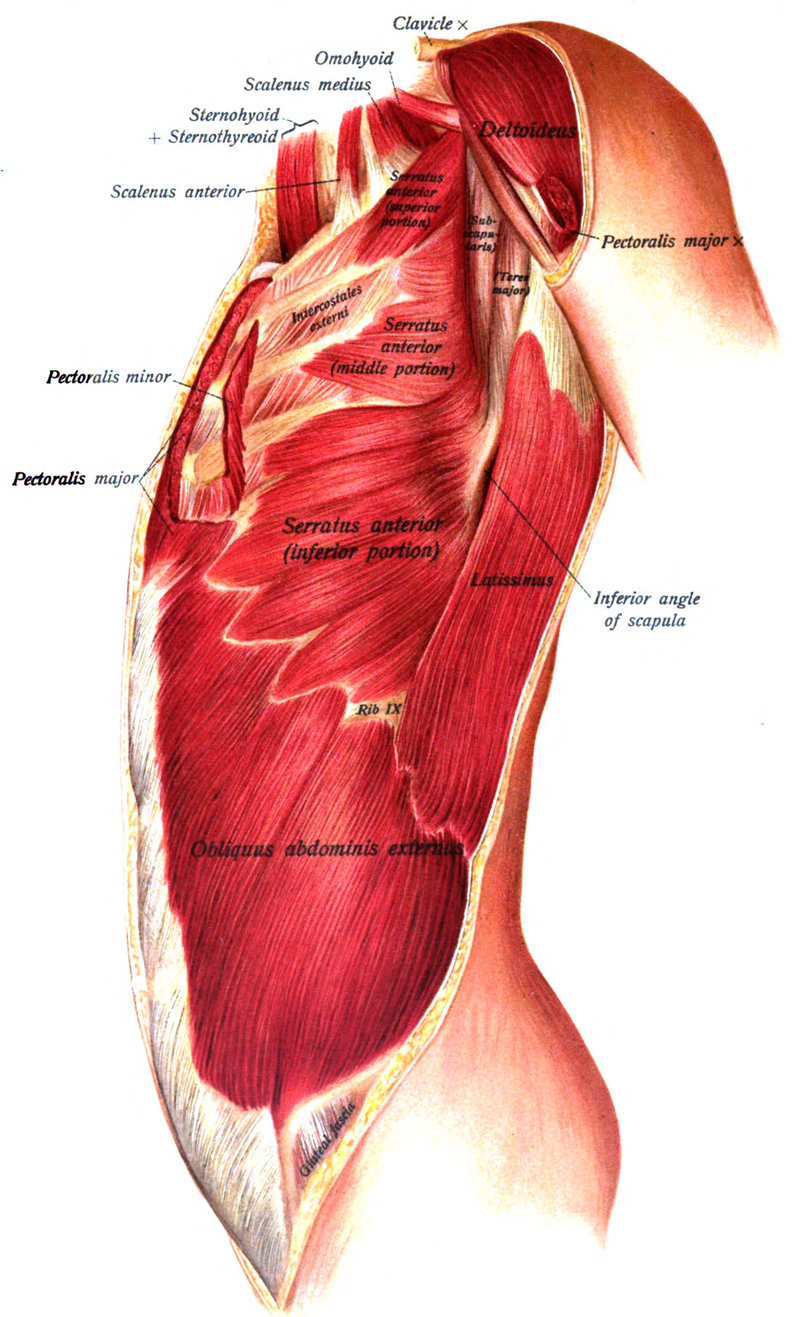Dysfunctional Scapular Stabilization Test
The scapular stabilization tests are designed to assess the ability of the serratus anterior to hold the medial border of the scapula firmly against the thorax when loading is applied through the arms. If the therapist observes winging of the scapula with either one of these tests then the assumption is that the serratus anterior is weak/inhibited. Often when this occurs you’ll notice that the normal thoracic kyphosis is reduced with straightening of the upper thoracic spine. In extreme cases the upper thoracic spine appears lordotic. Multiple ERS dysfunctions from T3-5 are often found when this has occurred and they need to be addressed first before attempting to retrain and strengthen the serratus.
Anatomy and Biomechanical Considerations:
Serratus Anterior
- Attaches from along the medial border of the scapula and especially to the inferior angle, to ribs 1-8 or 9
- Functions: upwardly rotates, posteriorly tilts and externally rotates the scapula; protracts the shoulder or posteriorly translates the thorax resulting in flexion of the thoracic spine
- Innervation: long thoracic n., C5, 6, 7
- Inhibited by ERS dysfunctions from T3-5

